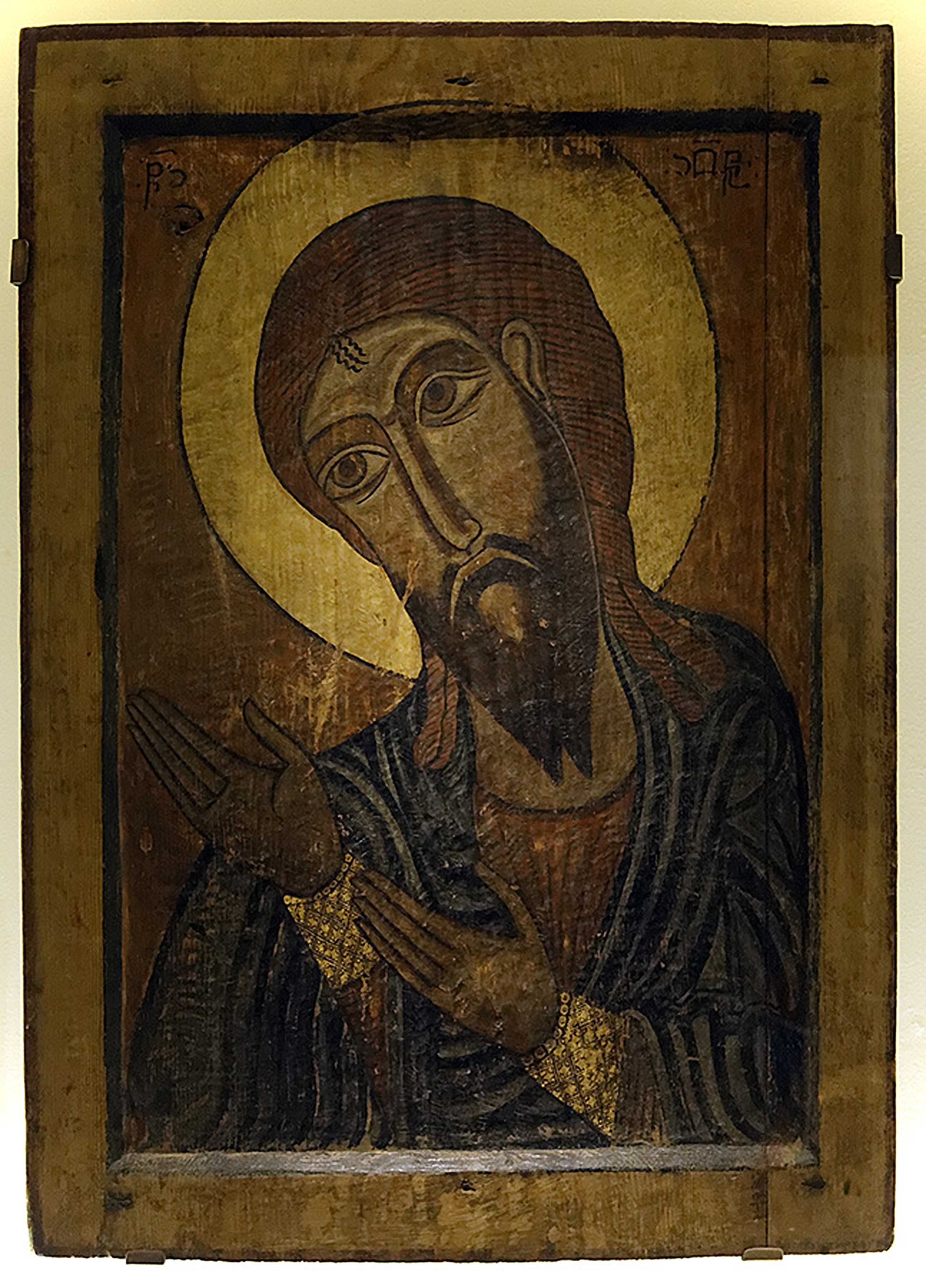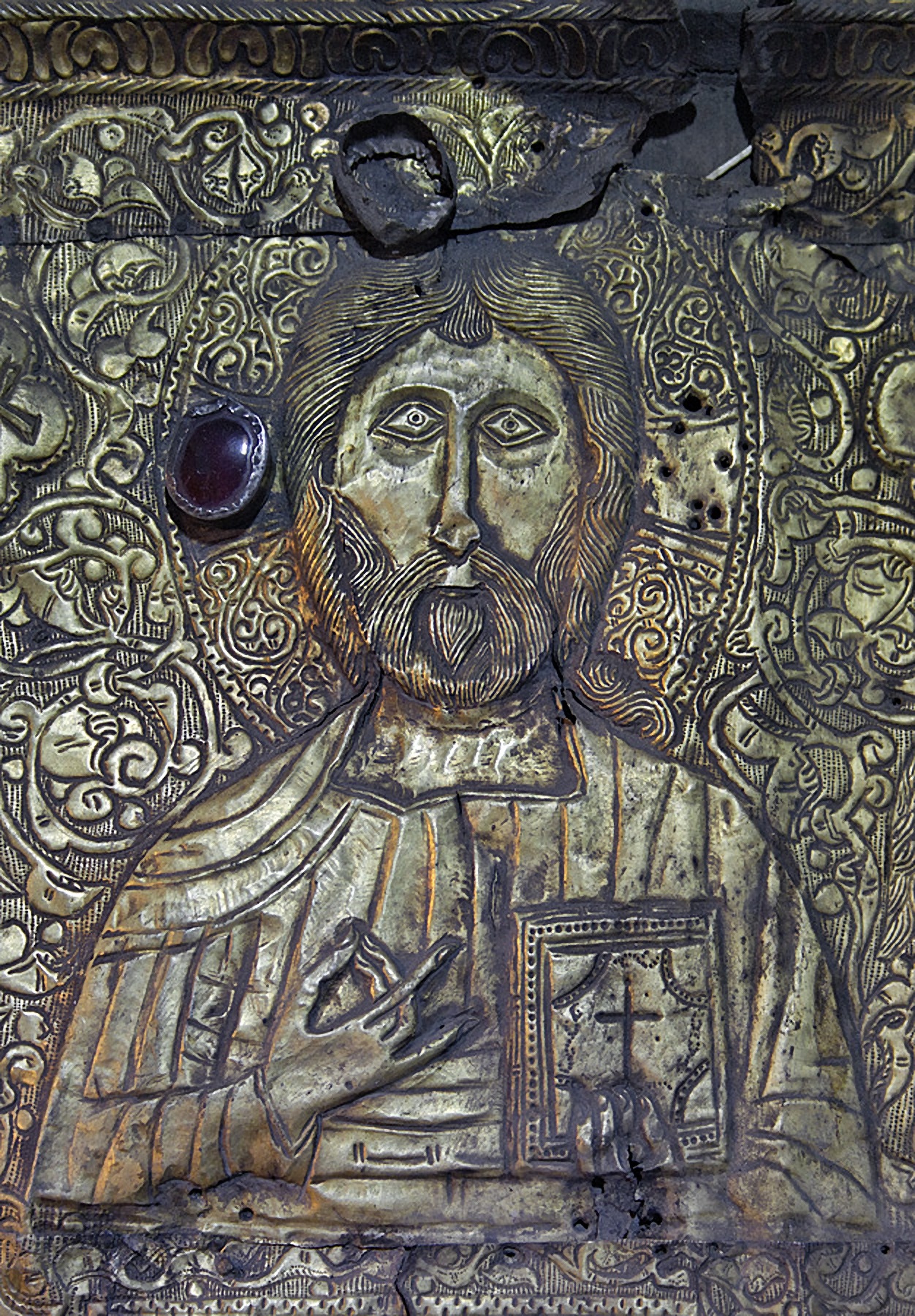There might be many reasons to visit Svaneti, Georgia’s highest region and the furthest from its capital. Stunning Caucasus landscapes? Check. Millennium-old watchtowers? Check. Ancient roots of the proto-Georgian language? Pre-Christian pagan traditions in conflict with the resurgent ancient Orthodoxy? Best honey in the country, best sulguni cheese and potatoes, original source of real Svan salt? All of these categories and more.
Regardless of one’s religious worldview, from any degree of any of the world’s religions to “atheist or agnostic”, the religious art contained in Svaneti is not to be missed either, and might form its own reason to come on up, a miniature feast for both the eyes and that of which they are the windows, the soul. Because the country was so inaccessible in the many centuries before the mostly Soviet-built road replaced its single file horse track, Svaneti received the national treasure for safekeeping. Waves and generations of invaders from the whole surrounding world laid waste to the lowlands, desecrated churches, enslaved whole populations, tried to enforce conversion. Monarchs sent the royal collections there on many separate occasions… and there they stayed, for the most part, kept rather too well, never to return.

If you have never seen a centuries-old depiction of a six-winged cherub or seraph from the Old Testament, these abound. Other popular subjects are warrior angels; Jesus Christ at various ages and in various roles; the Virgin Mary; Sts. George, Barbara, Kvirike, Tevdore and more.
Materials? Three are most common: fragile paintings on wood; chased silver, or gilt on chased silver. The chased metal icons could be filled with molten beeswax from the back to preserve their contours as well as possible from being flattened out. A separate category from these intentionally portable objects would be the deliberately immovable ones: painted frescoes on the interior and, sometimes, even the exterior, walls of churches. Much rarer are carved but unpainted wood relief pieces, some of which are even from the 21st century but no less magnificent for this young age; these may even be for sale.
Surviving quality varies from “as made, mint condition” to “really needing restoration before it’s gone”. The metal icons have had the best chance of resisting damage, the painted ones and their wall cousins the least, with sun, rain, wind and camera flashes all taking their toll, fading or simply stripping paint, indoors or out.
The spirit of all these works is unique. Some of the icons are so venerated that they are only put on public display one day a year, their or their church’s annual feast day. Otherwise they may be under 24/7/365 guard. A story tells of one of these being stolen from the high church in K’ala, in the pre-guarded years; the thieves made off with it across the mountains. The locals gave vigorous chase, caught up with them, STONED THEM TO DEATH then and there, and recovered their precious item. A lesson was learned by all in the process, including would be future thieves and protectors or patrons. Now? Yes, permanent guard in shifts, lock and key.
Where can such magnificent things be found? Practically every village church a century or older will have at least one icon or fresco; all one usually need do is ask for the person who has the church key to be granted admittance, who usually lives nearby (note: entry may only be granted to men in some cases!). The best concentrations of icons are the spectacular, world class, now properly labeled Mestia and Ushguli main museums, and much of Latali, which has probably more churches than any other village in all of Georgia.
The author pleads, even if there is no such prohibition formally in place, that any photography be done without using flash, as this damages paint by speeding up its fading! You can also always ask about a particular piece’s age, contents, materials and other details, if these are lacking in its description. There is much to learn about how religious subjects were, and are to this day, depicted in Orthodox art, and the reasons why. Usually one will find a quite willing explanation. And come away quite enriched.

Tony Hanmer has lived in Georgia since 1999, in Svaneti since 2007, and been a weekly writer for GT since early 2011. He runs the “Svaneti Renaissance” Facebook group, now with nearly 1500 members, at www.facebook.com/groups/SvanetiRenaissance/
He and his wife also run their own guest house in Etseri:
www.facebook.com/hanmer.house.svaneti
